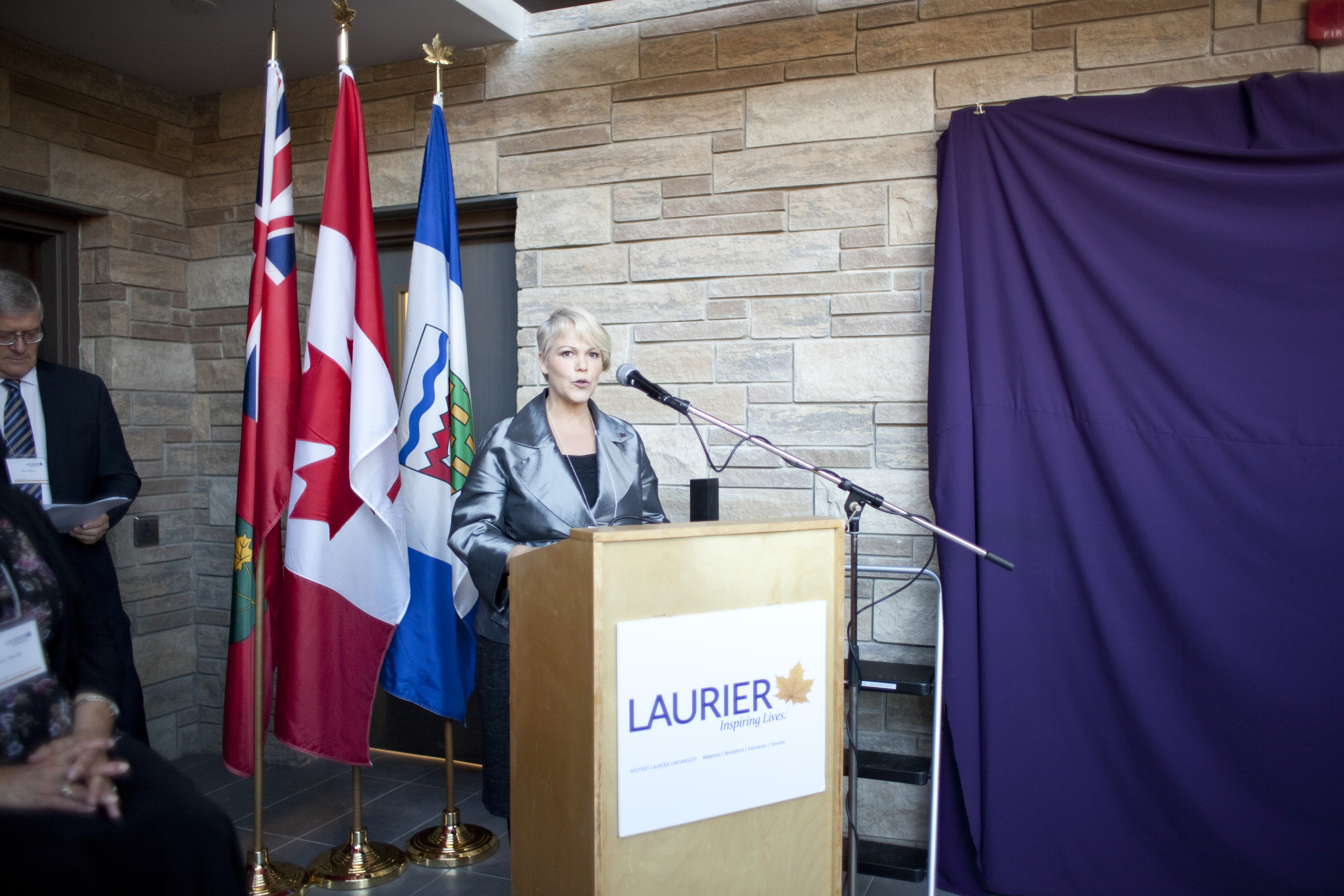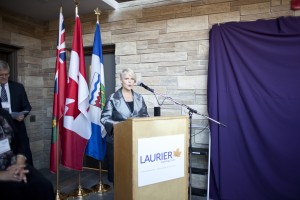New centre supports water research


On Oct. 11, Wilfrid Laurier University made history with the opening of their new facility for water research.
The facility is called the Centre for Cold Regions and Water Science, and is located on campus at 65 Lodge St. Two-stories tall, the building spans 16,000 square feet.
“The centre will be the home for leading-edge research from scientists all across Canada, in fact internationally,” Laurier’s president and vice-chancellor, Max Blouw, explained in his speech at the centre’s grand opening.
Researchers, students, faculty members and even members of parliament gathered in excitement for the grand opening of the building. In her speech, vice-president of research, Abby Goodrum, explained that not only were they celebrating the opening of the centre, but research itself. She described it as “research that will have a direct and positive impact on the lives of Canadians.”
The centre is devoted to water research for solutions in Canada and around the world. It represents partnerships between multiple fields of studies, between researchers and students, and between the government and the university. As such, it is meant to enable members of the Laurier community and beyond to approach the study of water and cold regions from a variety of perspectives.
Home to the Great Lakes, Canada holds 20 per cent of the world’s freshwater, of which seven per cent is renewable. Freshwater research plays an important role in ensuring that our water resources are healthy.
According to Goodrum, “water and cold regions are key areas of research excellence at Laurier and the study of these areas is of critical importance given the fresh water resources in Canada.”
The research center will help to improve water quality and create guidelines and regulations to protect Canada’s freshwater resources. Being located near the Grand River, researchers will be able to evaluate how urbanization impacts the local water supply.
“The goal of the building is really to bring research together,” said Deb MacLatchy, vice-president of academic and provost.
Over the past number of years, Laurier has been able to obtain research funds to improve the infrastructure at the school for doing water and cold regions research. The opening of this building gives researchers from various schools the opportunity to come together to work on the same topic.
Beyond faculty and staff, those who will be able to utilize the building will mainly consist of undergraduate thesis students, graduate students and their supervisors. However, students that don’t fit into these categories also have the opportunity to get involved.
“The best way for students to get involved, if they’re interested, is to talk to faculty members,” MacLatchy explained. “For example, [students] in science and geography who are going to work here at the centre. They should talk to them about the type of research they want to get involved with.”
MacLatchy described the opening of the facility as spectacular.
“Having buildings like this demonstrates to the community and the rest of the world, all the excellent research that goes on at Laurier.”


